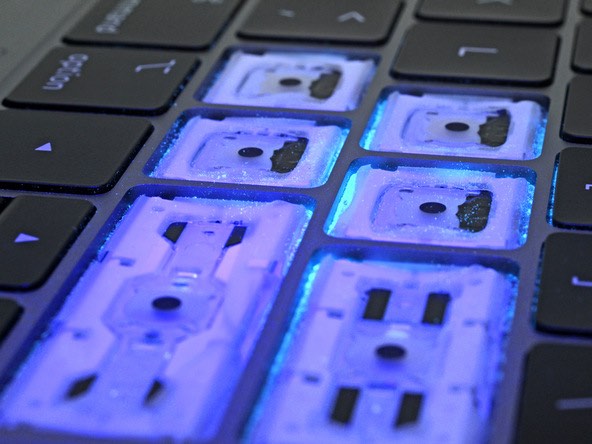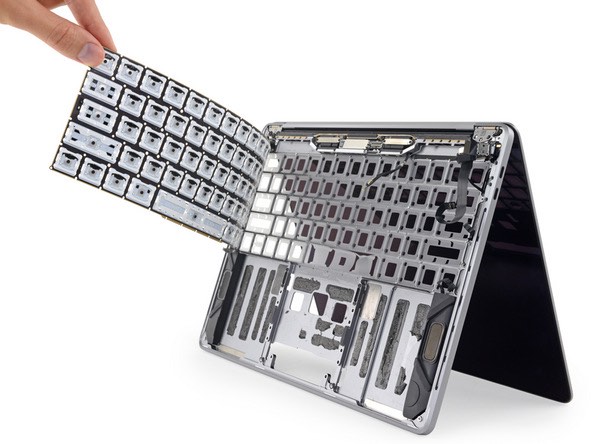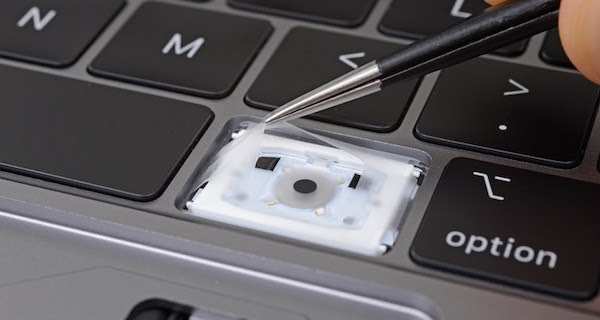Apple recently released new MacBook Pro models. Experts from iFixit took the 13-inch version of the new Apple laptop to the test and took apart its keyboard in detail. What did they manage to figure out?
After disassembling the keyboard that the new MacBook Pro 2018 has, people from iFixit discovered a completely new silicone membrane. This was hidden under the keys with the "butterfly" mechanism, which first appeared on Apple laptops in 2016. The membrane was placed under the keyboard for the sake of greater protection against the penetration of small foreign bodies, especially dust and similar materials. These small bodies can very easily get stuck in the spaces under the keys and in some cases also cause problems with the functioning of the computer.
But iFixit didn't just stop at simply disassembling the keyboard - testing the reliability of the membrane was also part of the "research". The keyboard of the tested MacBook was sprinkled with a special luminescent dye in powder, with the help of which experts from iFixit wanted to find out where and how dust tends to accumulate. The MacBook Pro keyboard from last year was tested in the same way, when the test revealed slightly worse protection.
It could be interest you

In the case of this year's models, however, it was found that the material, which simulates dust, is securely attached to the edges of the membrane, and the key mechanism is reliably protected. Although there are small holes in the membrane that allow the movement of the keys, these holes do not allow dust to pass through. Compared to the keyboards of last year's models, this means significantly higher protection. However, this is not 100% protection: during the simulation of intense typing on the keyboard, dust penetrated through the membrane.
The membrane is therefore not 1,5% reliable, but it is a significant improvement compared to previous models. In iFixit, they took apart the keyboard of the new MacBook Pro really carefully and layer by layer. As part of this analysis, they discovered that the membrane is made up of a single, integral sheet. Small differences were also found in the thickness of the key cover, which dropped from last year's 1,25 mm to XNUMX mm. The thinning most likely happened so that there was enough space in the keyboard for the silicone membrane. The space bar and its mechanism have also been reworked: the key can now be removed more easily – like the other keys of the new MacBook.
Source: MacRumors


